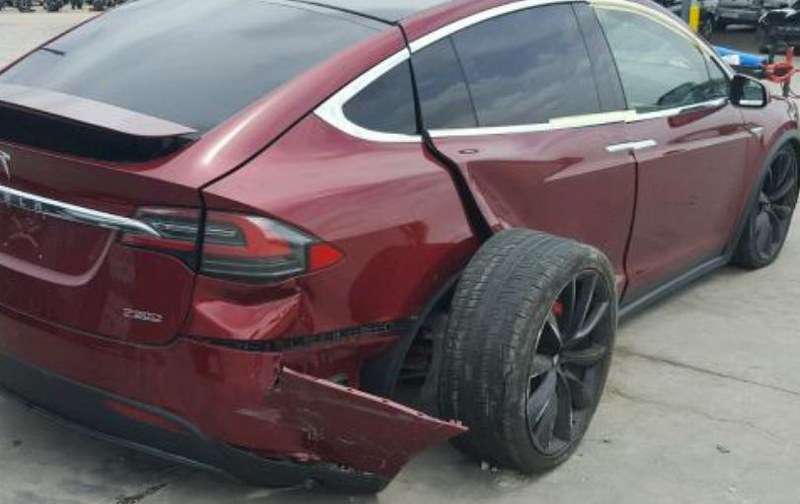Tesla’s 426 Suspension Woes: NHTSA Demands Urgent Fix for Dangerous ‘Whompy Wheel’ Issue – Is It a Major Flaw?

The National Highway Traffic Safety Administration (NHTSA) is once again spotlighting Tesla, urging the company to extend its service efforts to address persistent suspension issues affecting older Model S and Model X vehicles. This call to action comes in response to ongoing concerns over a defect that has left many drivers grappling with a troubling issue known colloquially as the “whompy wheel.”
What’s the Problem?
The “whompy wheel” phenomenon, identified by the NHTSA’s Office of Defects Investigation (ODI), is linked to a failure in the front suspension of certain Tesla vehicles. Specifically, the problem arises when the fore links—the components connecting the suspension to the vehicle’s chassis—fail. This malfunction can cause the tire to rub against the wheel well, particularly at lower speeds. Though this defect does not directly compromise vehicle control, it poses a risk to the integrity of the vehicle and, by extension, to driver safety.
The affected models include the 2015–2017 Tesla Model S and the 2016–2017 Tesla Model X. The NHTSA’s investigation revealed 426 instances of this defect, prompting the agency to recommend that Tesla broaden its existing service bulletin to encompass more vehicles affected by the issue.

Background and Previous Actions
The NHTSA’s scrutiny of Tesla suspension issues dates back to 2016, when the agency first began examining complaints and reports about the Model S’s suspension system. The probe intensified in 2020, focusing specifically on the problematic fore links and their failure rates.
In response to earlier findings, Tesla issued a service bulletin in 2017, addressing the issue for vehicles produced during a specific timeframe. However, this solution was not without controversy. Reports surfaced that Tesla required customers to sign non-disclosure agreements (NDAs) as part of their repair process, a practice that drew criticism for potentially limiting transparency and customer rights.
NHTSA’s Current Recommendations
The NHTSA is now advocating for Tesla to extend its service bulletin to cover more vehicles, including those outside the previously specified production window. This recommendation aims to ensure that all affected vehicles receive the necessary repairs, mitigating the risk of further suspension failures and ensuring continued vehicle safety.
While Tesla has made strides in addressing some of these issues, the NHTSA’s latest recommendations underscore the need for comprehensive action. Expanding the service bulletin not only addresses a broader range of affected vehicles but also reinforces Tesla’s commitment to resolving customer concerns in a transparent and effective manner.
Looking Ahead
As Tesla continues to innovate and expand its fleet, addressing these suspension issues is crucial for maintaining trust and ensuring vehicle safety. The NHTSA’s recommendations serve as a reminder of the importance of rigorous quality control and responsive customer service in the automotive industry.
For Tesla owners experiencing suspension problems or “whompy wheel” symptoms, staying informed about these developments and seeking timely repairs remains vital. As the situation evolves, both Tesla and its customers will benefit from a proactive approach to vehicle maintenance and safety.
Stay tuned for further updates on this developing story as we continue to monitor Tesla’s response and the NHTSA’s actions.
Tesla’s Response and Controversy
Tesla first addressed the suspension issues in 2017 with a service bulletin aimed at a specific range of vehicles. However, this response was not without its controversies. Reports emerged that Tesla required customers to sign non-disclosure agreements (NDAs) as part of the repair process, a move that sparked criticism for potentially limiting transparency and restricting customer rights. The NHTSA’s current push for broader service efforts underscores the importance of addressing these issues comprehensively and transparently.

What Should Tesla Owners Do?
If you own a 2015–2017 Tesla Model S or a 2016–2017 Model X and are experiencing suspension problems, it’s crucial to stay informed about these developments. Ensure that your vehicle receives the necessary repairs by contacting Tesla for service, especially if you notice any “whompy wheel” symptoms.
What Is the “Whompy Wheel” Problem?
The term “whompy wheel” refers to a troubling issue identified by the NHTSA’s Office of Defects Investigation (ODI). This problem is associated with a failure in the front suspension system of certain Tesla vehicles, particularly affecting the 2015–2017 Model S and the 2016–2017 Model X. The defect occurs when the fore links—the critical components that connect the suspension to the vehicle’s chassis—fail, causing the tire to rub against the wheel well, especially at lower speeds. While this issue doesn’t directly impair vehicle control, it poses a significant risk to the vehicle’s structural integrity and, by extension, to driver safety.
Looking Ahead: The Importance of Safety and Transparency
As Tesla continues to innovate and expand its product lineup, addressing these suspension issues is vital for maintaining customer trust and ensuring the safety of its vehicles. The NHTSA’s recommendations serve as a reminder of the need for rigorous quality control and responsive customer service in the automotive industry.

For Tesla owners experiencing symptoms of the “whompy wheel” or other suspension-related issues, staying informed about these developments and seeking prompt repairs is crucial. By taking a proactive approach to vehicle maintenance, Tesla can continue to lead the way in the electric vehicle market, while ensuring the safety and satisfaction of its customers.
Stay tuned for further updates on Tesla’s response to the NHTSA’s recommendations as this story continues to unfold.






